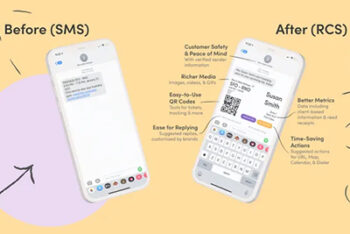A promising standard for improving the way Android users exchange messages is Rich Communication Services (RCS) messaging. Compared to conventional SMS and MMS, RCS seeks to offer a more feature-rich and interactive messaging experience. This article will explain what RCS messaging is, how it functions, and why Android users should care.
Understanding RCS Messaging
RCS messaging is frequently referred to as the next development after SMS and MMS. It provides features comparable to those present in well-known messaging apps like WhatsApp and iMessage, allowing users to exchange messages that go beyond static graphics and plain text. RCS communications has a number of important components, including:
Rich Media Sharing Rich Media Sharing enables you to transfer high-definition photographs, videos, files, and even animated GIFs through your chat application.
Read Receipts and Typing Indicators RCS offers read receipts, which show when a message has been read. It also offers typing indicators that show when the other person is creating a message. Moreover, WhatsApp Plus offers some advanced features that can be useful for messaging, such as the ability to recover deleted messages and hide your online status from selective people.
Group conversations: RCS allows group conversations with sophisticated capabilities like the capacity to name groups, include and exclude users, and share multimedia files within the group.
Enhanced Messaging Experience When compared to conventional SMS, RCS offers a more aesthetically pleasing UI, improved group chat management, and longer message durations.
How RCS Works
The transmission of messages via RCS messaging requires an internet connection, either via mobile data or Wi-Fi. RCS makes use of data networks to send and receive messages, in contrast to SMS, which relies on the text messaging service provided by cellular networks. This makes RCS Communications a cost-effective communication choice because they don’t incur additional fees above and beyond your data plan.
Both the sender and the recipient must have compatible devices and RCS-compatible messaging apps in order to use RCS messaging. The majority of Android smartphones have RCS built-in, and well-known messaging services like Google Messages include RCS capability. Rich media and real-time data can be exchanged directly between two suitable devices when they connect directly during RCS communication.
Why RCS Matters to Android Users
Android users should care about RCS communications for the following reasons:
No third-party apps are required.RCS is seamlessly incorporated into the default messaging software on many Android smartphones, providing a comfortable and familiar experience.
The Universal Standard RCS is intended to be a worldwide communications standard, which could one day make it easier for Android users to converse with people using other platforms.
Enhanced Features The messaging experience for Android users has been enhanced with extra features, making it simpler to share media, plan group chats, and keep track of message delivery and read status. Additionally, there are more applications that Android users use most for messaging purposes that offer enhanced features, such as GBWhatsApp.
Cost Efficiency RCS messages are more cost-effective because they use data rather than SMS rates, which could result in savings for customers.

